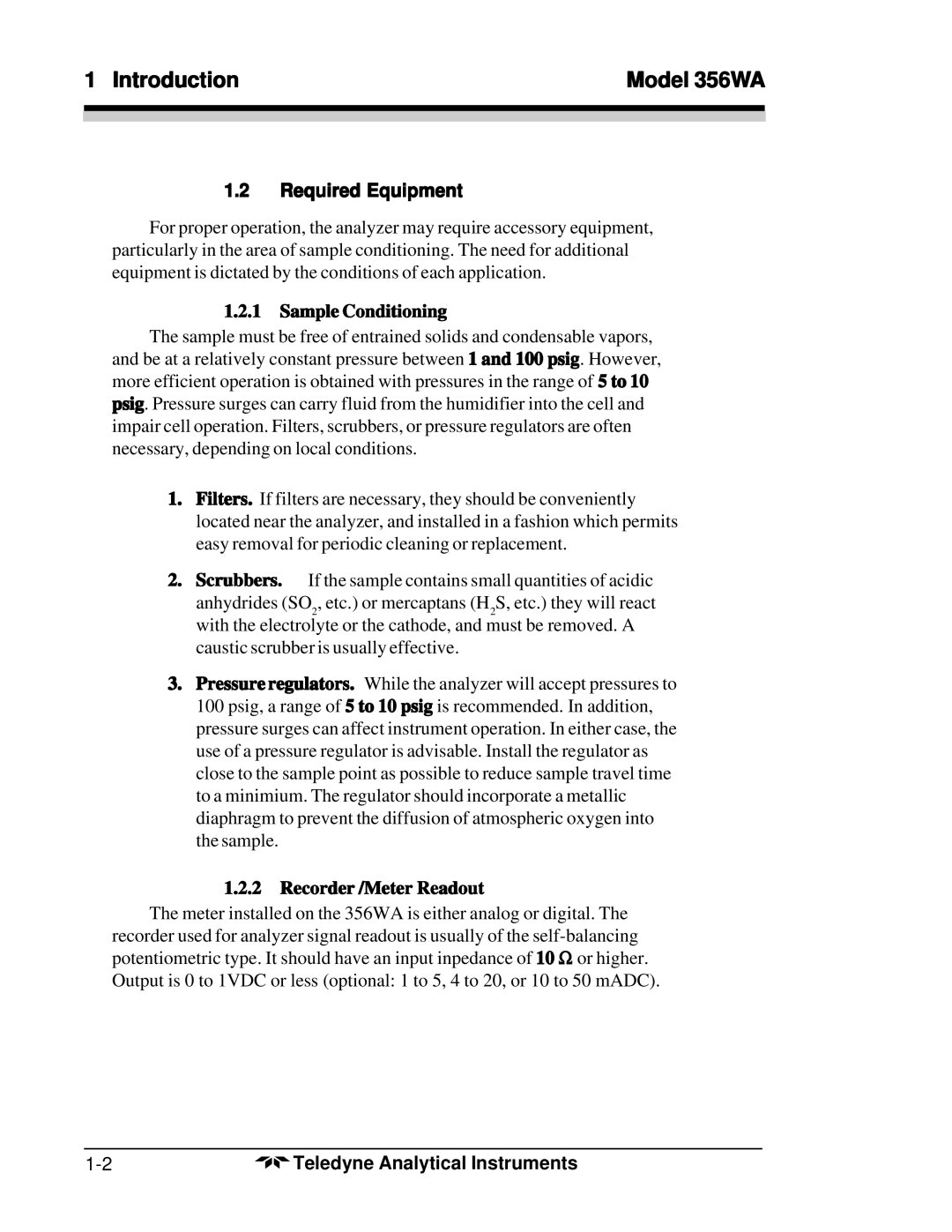
1 Introduction | Model 356WA |
|
|
|
|
1.2Required Equipment
For proper operation, the analyzer may require accessory equipment, particularly in the area of sample conditioning. The need for additional equipment is dictated by the conditions of each application.
1.2.1 Sample Conditioning
The sample must be free of entrained solids and condensable vapors, and be at a relatively constant pressure between 1 and 100 psig. However, more efficient operation is obtained with pressures in the range of 5 to 10 psig. Pressure surges can carry fluid from the humidifier into the cell and impair cell operation. Filters, scrubbers, or pressure regulators are often necessary, depending on local conditions.
1.Filters. If filters are necessary, they should be conveniently located near the analyzer, and installed in a fashion which permits easy removal for periodic cleaning or replacement.
2.Scrubbers. If the sample contains small quantities of acidic
anhydrides (SO2, etc.) or mercaptans (H2S, etc.) they will react with the electrolyte or the cathode, and must be removed. A
caustic scrubber is usually effective.
3.Pressure regulators. While the analyzer will accept pressures to 100 psig, a range of 5 to 10 psig is recommended. In addition, pressure surges can affect instrument operation. In either case, the use of a pressure regulator is advisable. Install the regulator as close to the sample point as possible to reduce sample travel time to a minimium. The regulator should incorporate a metallic diaphragm to prevent the diffusion of atmospheric oxygen into the sample.
1.2.2 Recorder /Meter Readout
The meter installed on the 356WA is either analog or digital. The recorder used for analyzer signal readout is usually of the
Teledyne Analytical Instruments |
